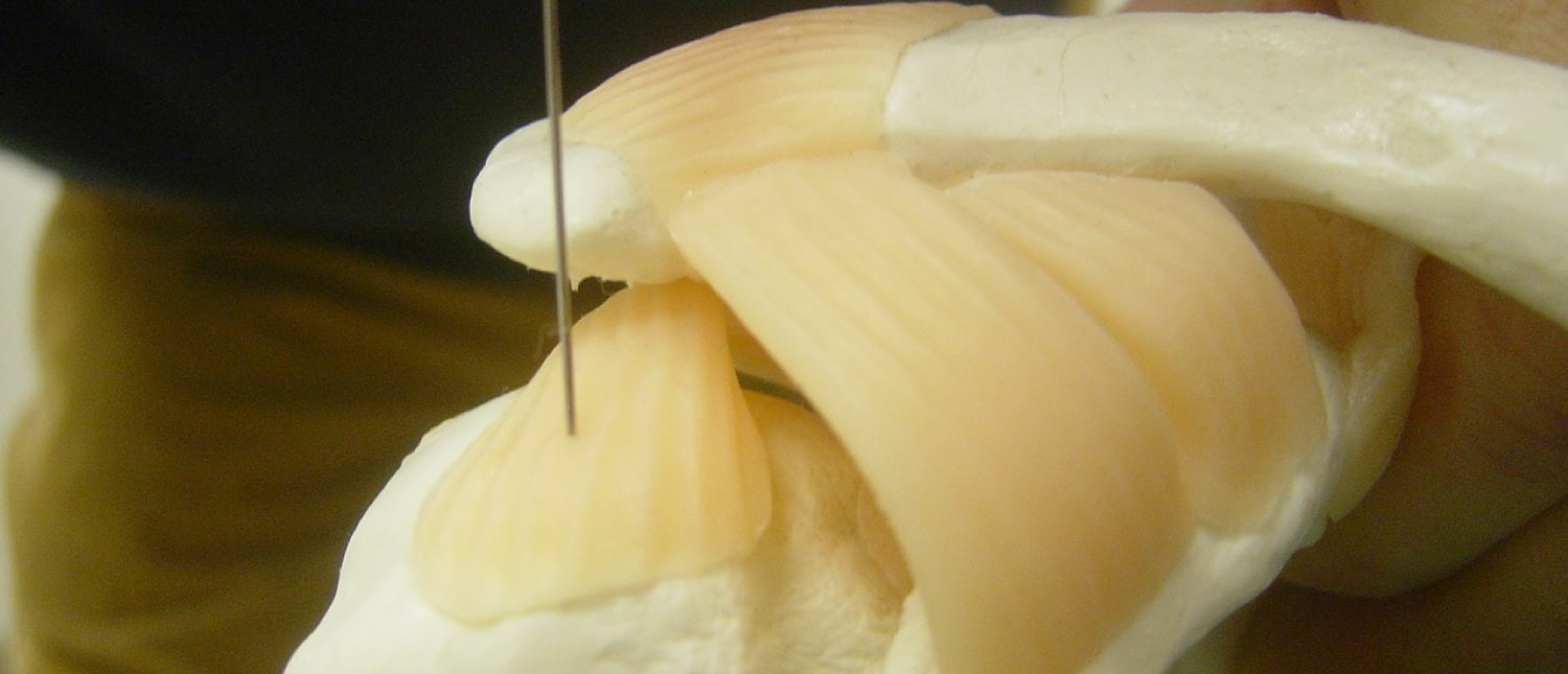
Why using hyaluronic acid injections?
Injection with hyaluronic acid
By Dr. Jan Claeys, M.D.
Indications of injections and infiltrations with hyaluronic acid
Hyaluronic acid injections in osteoarthrotic joints ?
Synovial fluid is visco-elastic due to the presence of hyaluronan, which is found in all synovial joints, particularly the large body-load bearing joints, where it ensures normal, painless movement due to its lubrificating and shock-absorbing properties.
Hyaluronan forms a coating layer over the entire inner surface of a healthy joint.
This coating acts as a visco-elastic shield over the cartilage and synovium, protecting these structures from mechanical damage.
In osteoarthrosis, the hyaluronan in the joint space becomes depolymerised and fragmented. The synovial fluid becomes less viscous and its lubricating and shock-absorbing abilities are reduced. The coating of hyaluronan over the inner surface of the joint breaks down, leaving the cartilage and synovium exposed to mechanical and inflammatory damage.
The intra-articular injection of hyaluronan increases the viscosity of the synovial fluid, restoring its lubricating and shock-absorbing properties.
In addition it reestablishes the protective coating of hyaluronan over the inner surface of the joint.
The direct affects of exogenous hyaluronan cannot account for its long-term benefits, as it is cleared from the joint within a few days. It appears that, through its direct effects, exogenous hyaluronan restores the ability of the joint to produce its own hyaluronan and thus returns to a state of homeostasis, that persist for several months.
For the intra-articular injections, we use sodium hyaluronate, produced by bacterial fermentation, containing no animal protein contamination. Therefore the allergic potential is negligible.
The molecular weight distribution of this hyaluronan, is narrow (0,75 - 2,25 MDa) and unimodal. This avoids both the potential inflammatory side-effects of low molecular weight hyaluronan and the injection site pain, that can be attributed to the viscosity of very high molecular weight hyaluronan.
- For small joints we use 1 ml of sodium hyaluronate 1%.
- For the hip joint we use 2 ml of sodium hyaluronate 2%.
- For the other joints 2 ml of sodium hyaluronate 1% is used.
The best results are seen in osteoarthrosis of the trapezio-first-metacarpal joint, the hip joint, the knee joint, the ankle and the talo-calcanean joint.
- Hypersensitivity is possible, but rare.
- Local pain, feeling of heat, redness and swelling may occur, when accurately injected.
- Local pain can also occur by injection in the surrounding tissues and not intra-articular.
Hyaluronan is a high molecular weight biopolymer which is present in many of our tissues as an important component of the extracellular matrix. In the joint cartilage, hyaluronan is the backbone of the proteoglycans, which - together with collagen fibers - forms a matrix, in which the chondrocytes are embedded. Hyaluronan, at the same time, provides viscosity to the synovial fluid for its shock absorbing and lubricating properties. It furthermore acts as a molecular sieve (picture) and coats the pain receptors.
In osteoarthritis, the homeostasis of this system is severely disturbed due to the fact that hyaluronan in the synovial fluid is fragmented and diluted. Pain and restricted joint movement under load are then limiting the patient's daily live activities.
Upgrading the concentration and the molecular weight in the synovial fluid by intra-articular administration of exogenous hyaluronan (called viscosupplementation) has become very common in the symptomatic treatment of osteoarthritis. Medical societies propose this type of treatment already when the use of plain analgesics or nonsteroidal antirheumatic drugs is contraindicated, complicated by adverse drug reactions or ineffective in terms of pain reduction.
Intra-articular hyaluronan has been proven as safe and effective in numerous clinical studies. One of the main advantages of this treatment is its reliable and long-lasting carry over effect after a few injections only. The range of certified medical devices, which is available under the brand of Ostenil, has been used for more than ten years now in the successful treatment of osteoarthritis of bigger joints (like knee, hip and shoulder) and of smaller joints (CMC, hallux and facet joint of the spine) as well. The medium molecular weight of hyaluronan from fermentation and the terminal sterilization of the syringe in its blister confer to the safety and efficacy of Ostenil, one of the leading products in the market..
